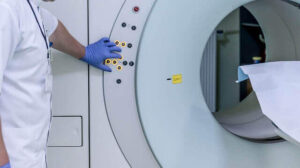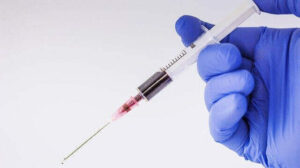Reading Your Lab Test Results – Here are 2 of the most common types of blood tests and what they can tell the doctor about your Health: the complete blood count (CBC) and the chemistry panel.
Some people find it helps to ask for a copy of their lab test results and have a member of their health care team go over the numbers with them. By getting a copy, you can also see what the normal ranges are for the lab that tested your blood and where your numbers fall within that range.
Reading Your Lab Test Results
Complete blood count (CBC)
The most common lab test that you’ll have done during treatment is called a complete blood count, or CBC. Blood is made up of water, proteins, nutrients, and living cells. A CBC tells your health care team about the cells in your blood. It measures 3 basic types of blood cells:
- Red blood cells
- White blood cells
- Platelets
Each of these cells has a special purpose. And each can be harmed by cancer and cancer treatments.
Reading Your Lab Test Results: Red blood cells (RBCs)
RBCs carry oxygen to and carbon dioxide away from the cells in your body. The CBC measures red blood cells in many ways, but the simplest measure is either
Hemoglobin (Hgb), the part of each RBC that carries iron
or
Hematocrit (Hct), the percent of RBCs in the blood
When the Hgb and Hct values fall too low, it’s called anemia .
Reading Your Lab Test Results: Platelets (Plts)
Platelets help control bleeding. You may bruise or bleed easily when your platelet levels are low. The risk of bleeding goes up when platelet levels drop below 20,000.
When your platelet count is low, your health care team may call it thrombocytopenia.
White blood cells (WBCs)
WBCs fight infection. There are many types of white blood cells and each fights infection in a special way.
The most important infection-fighting WBC is the neutrophil. The number doctors look at is called yourabsolute neutrophil count (ANC). A healthy person has an ANC between 2,500 and 6,000.
The ANC is found by multiplying the WBC count by the percent of neutrophils in the blood. For instance, if the WBC count is 8,000 and 50% of the WBCs are neutrophils, the ANC is 4,000 (8,000 × 0.50 = 4,000).
When the ANC drops below 1,000 it is called neutropenia. Your doctor will watch your ANC closely because the risk of infection is much higher when the ANC is below 500.
Chemistry panel
Another type of blood testing looks at blood chemistry. Chemistry panels may also be called by other names, such asmetabolic profile or blood chemistry profile. One blood sample can be used to measure many things like:
- Fats (lipids)
- Proteins
- Sugar (glucose)
- Electrolytes (like potassium, magnesium, sodium, and calcium)
- Enzymes
Certain blood chemistry tests can show how well your organs are working. For instance, liver function studies tell your doctor how well your liver is working. Other tests look at how well your kidneys are working. The chemistry panel may also show other problems with body function.
Some treatments can cause changes in your body’s blood chemistry, such as a drop in the amount of potassium in your blood. Your blood chemistry balance can also be changed by dehydration (not enough fluid in the body), which may be caused by nausea, vomiting, or diarrhea. Your doctor will order blood chemistry tests if there is concern that you may have any of these problems.
If the tests show that certain electrolytes are too low, your doctor may decide to replace them. If the tests show you are dehydrated, you may be given intravenous (IV) fluids. It’s important to have all the tests your doctor orders because most of the time you won’t have any symptoms until one or more blood chemistry values are dangerously low or high.
How to find normal values
Each lab has its own range for what it considers normal values for complete blood counts and chemistry panel results. What’s normal for one lab might not quite be normal for another, so it’s important to know what your lab’s normal range is when looking at your results. Normal ranges for some tests also vary by age and gender. As a rule, the normal ranges are printed on the lab report, next to your test results.
Common terms and numbers you may see on a CBC report and what they mean are on this chart:
|
Test |
Units* |
Normal values# |
Comments |
|
WBC (white blood cells) |
x 1000/mm3 |
5–10 |
Number of infection-fighting cells |
|
RBC (red blood cells) |
x 1,000,000/mm3 |
4.2–6.1 |
Number of RBCs |
|
Hgb (hemoglobin) |
g/dL |
12–18 |
Measure of RBCs, which carry oxygen and carbon dioxide |
|
Hct (hematocrit) |
% |
37–52 |
Percentage of blood made up of RBCs |
|
Plt (platelets) |
x 1,000/mm3 |
150–450 |
Number of platelets. This number helps show risk of bleeding |
*Note that results are often given in short form, as shown on this table. For instance, a WBC result may be shown as 6.2 rather than 6,200, which is why the Units column shows multiplying by 1000 (x 1000), sometimes abbreviated as K. RBCs are often shown as multiples of a million, sometimes abbreviated as M. The /mm3 stands for cubic millimeter, which is the same as µL (microliter). Grams is shown by the letter g, and dL means deciliter.
# These number ranges vary somewhat among labs.
Here’s an example of CBC test results, in a person with anemia, or a low hemoglobin and hematocrit:
|
Test |
Result |
Reference range# |
This result may also be listed as |
|
WBC (white blood cells) |
6.2 x 1000/mm3 |
5–10 |
6.2K/mm3 or 62,000/mm3 |
|
RBC (red blood cells) |
4.4 x 1,000,000/mm3 |
4.2–6.1 |
4.4M/mm3 or 4,400,000/ mm3 |
|
9 g/dL (L) |
12–18 |
||
|
Hct (hematocrit) |
28% (L) |
37–52 |
|
|
Plt (platelets) |
178 x 1000/mm3 |
150–450 |
178K/mm3 or 178,000/mm3 |
# These number ranges vary somewhat among labs.
Results that are high or low might have the letter (H) or (L) after the number, or may be printed to the side or in a different column to call attention to the abnormal result.
Again, getting a copy of your lab results lets you compare your numbers to the normal ranges and makes it easier to ask questions about the results and what they mean.
Unless noted, all values are for adults |
Thank you very much for reading Your Lab Test Results, hopefully useful.







